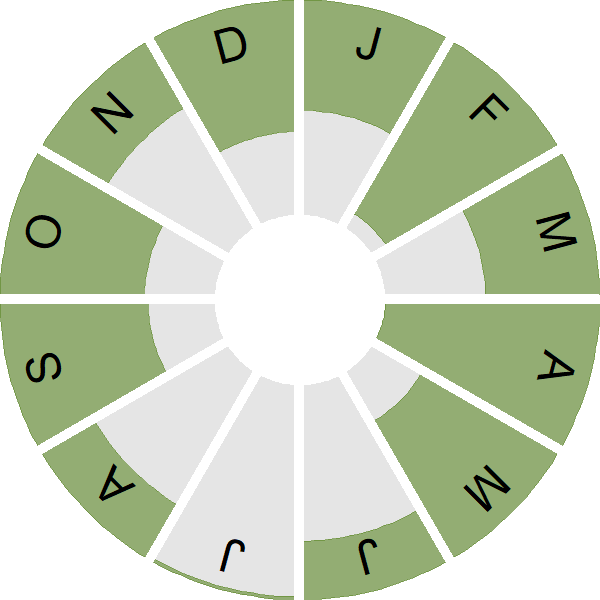Golden Pheasant

Introduction
This gorgeous pheasant, native to China, is an avicultural favourite. British birds have their origins in the deliberate or accidental releases of captive birds.
Past introductions in scattered parts of Britain – from Perthshire to Cornwall and Sussex – have led to populations that apparently sustained themselves for several decades. Almost all of these are now extinct and the status of this species on the British List therefore warrants review. Birds once bred in East Anglian pine plantations, Sussex Yew forests, and in scattered locations where Rhododendron was invading native woodland.
The reasons for the extinction of once-successful Golden Pheasant populations remains a mystery. Where deer have increased, closer grazing of the ground layer might have played a part, though in many former sites the habitat appears unchanged. Increases in the scale of releases of Pheasant and partridges on shooting estates have been considerable and might have mediated declines through competition or disease.

Key Stats
Identification
Songs and Calls
Song:
Call:
Status and Trends
Conservation Status
Population Change
Populations of this species in several localities across the UK arose from releases from the 18th century onwards (Lever 2009) and by the 20th century some of these were considered self-sustaining. The species is native to China and as a non-native species the UK populations do not have a conservation status. Steep declines occurred in the late 20th century and only a handful of birds may now remain at its last stronghold in Breckland, Norfolk (APEP4). It seems likely that the species will soon be extinct in the wild in the UK.
Distribution
Golden Pheasants were introduced to Britain in the 1700s. The winter and breeding distribution maps from 2007–11 show a stronghold in Breckland, with another very small population in northwest Norfolk. Elsewhere, there were isolated records of local escapes or recent introductions. The situation has likely deteriorated since then with fewer reports of the species in East Anglia.
Occupied 10-km squares in UK
or view it on Bird Atlas Mapstore.
or view it on Bird Atlas Mapstore.
European Distribution Map
Distribution Change
The Golden Pheasant's breeding range almost halved between 1988–91 and 2008–11 and this trend has likely continued.
Change in occupied 10-km squares in the UK
or view it on Bird Atlas Mapstore.
or view it on Bird Atlas Mapstore.
Seasonality
This species has been too rarely reported to BirdTrack during 2011–22 to properly assess seasonality.
Movement
Britain & Ireland movement
Foreign locations of birds ringed or recovered in Britain & Ireland
Dots show the foreign destinations of birds ringed in Britain & Ireland, and the origins of birds ringed overseas that were subsequently recaptured, resighted or found dead in Britain & Ireland. Dot colours indicate the time of year that the species was present at the location.
- Winter (Nov-Feb)
- Spring (Mar-Apr)
- Summer (May-Jul)
- Autumn (Aug-Oct)

Biology
Survival and Longevity
Survival is shown as the proportion of birds surviving from one year to the next and is derived from bird ringing data. It can also be used to estimate how long birds typically live.
View number ringed each year in the Online Ringing Report.
Classification, names and codes
Classification and Codes
- Order: Galliformes
- Family: Phasianidae
- Scientific name: Chrysolophus pictus
- Authority: Linnaeus, 1758
- BTO 2-letter code: GF
- BTO 5-letter code: GOLPH
- Euring code number: 3960
Alternate species names
- Catalan: faisà daurat
- Czech: bažant zlatý
- Danish: Guldfasan
- Dutch: Goudfazant
- Estonian: kuldfaasan
- Finnish: kultafasaani
- French: Faisan doré
- German: Goldfasan
- Hungarian: aranyfácán
- Icelandic: Gullfasani
- Italian: Fagiano dorato
- Latvian: zelta fazans
- Lithuanian: auksinis fazanas
- Norwegian: Gullfasan
- Polish: bazant zlocisty
- Portuguese: faisão-dourado
- Slovak: bažant zlatý
- Slovenian: zlati fazan
- Spanish: Faisán dorado
- Swedish: guldfasan
- Welsh: Ffesant Euraid
Research
Causes of Change and Solutions
Causes of change
The causes of the sharp decline of this species are unclear but possible causes in Breckland could include increased predation (including predation from Goshawks), and inbreeding (Lever 2005).

